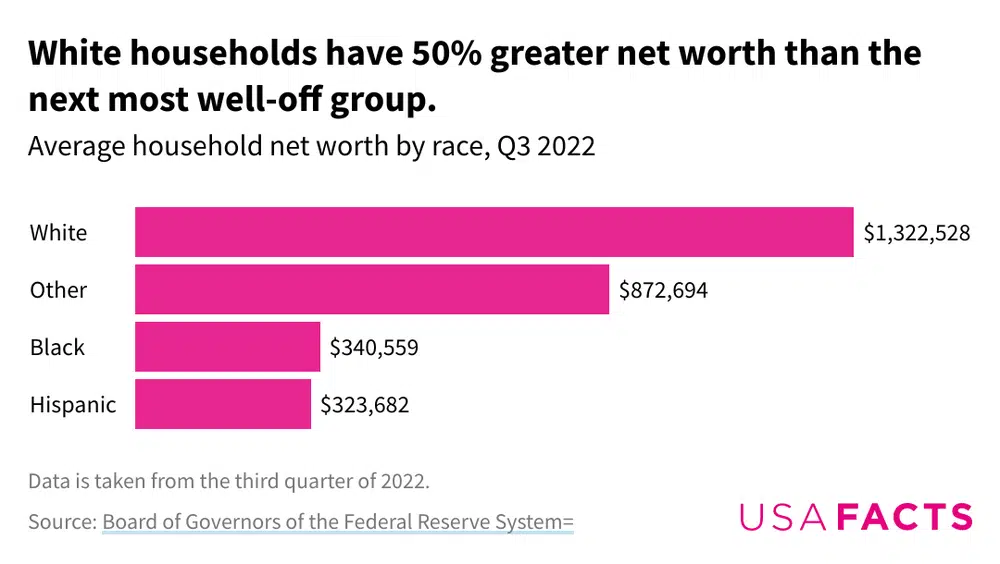Education
Which states pay teachers the most and least?

In the third quarter of 2022, the nation’s white households had $124.5 trillion in assets as measured by the Federal Reserve. In comparison, all Black households had under $8 trillion in total assets, Hispanic households had $5.5 trillion, and all other racial groups combined had roughly $15.7 trillion.
The data collected categorizes the net wealth of each demographic through several asset types, displayed in blue, and three liability types, displayed in pink.
The “other” category contains Asian, Native Hawaiian or Pacific Islander, American Indian or Alaska Native, and multi-race households.
After adjusting for assets and liabilities by household, the difference in wealth inequality by racial group becomes more apparent.
White households have the highest net worth, 52% greater than the net worth of those households in the other category, and more than four times greater than Hispanic households.

Using the number of households within each demographic, average assets for the white demographic came to approximately $1.48 million per household.
In descending order, people in the other races category had an average asset distribution of roughly $1.03 million per household, Black people had $425,913 per household, and Hispanic people had $422,884 per household.
You are signed up for the facts!
Hispanic people had the highest proportion of their assets put into real estate at 49% of total assets.
Black people had the highest proportion of assets put into retirement accounts at 35.2%, compared to 21.5% for Hispanic people and 18.4% for white people.
The white and other race demographics had the highest proportion of assets in stocks and mutual fund shares, at 22.6% and 18.7% on average, respectively. In contrast, the Black and Hispanic demographics had 4.5% and 2.8% of their assets in stocks and mutual fund shares on average, respectively.
Conversely, average household liabilities varied across these groups.
People of other races had an average of $158,803 in liabilities per household, closely followed by white households at $154,399 in liabilities, then Hispanic households had $99,203, and Black households at $85,354.
As the population of the US diversifies, the wealth distribution across racial demographics changes. In 1989, white people made up 74.6% of all households and controlled 89% of all assets. In 2022, white people made up 64% of all households and had roughly 81% of all assets.
Other notable shifts include the other races category, which controlled 4% of all assets in 1989 compared to 10% in 2022. In the same period, Black and Hispanic people have seen their proportional share of total assets grow minimally.
Because the other category comprises multiple racial groups, it is difficult to determine the exact cause of this generational transfer of wealth.
To learn more about the standard of living in the US read about wealth inequality by income and generation. Get the data directly to your inbox by signing up for our newsletter.
Newsletter
Keep up with the latest data and most popular content.